How to Warm Up For Powerlifting (Step-By-Step Guide) | PowerliftingTechnique.com (original) (raw)
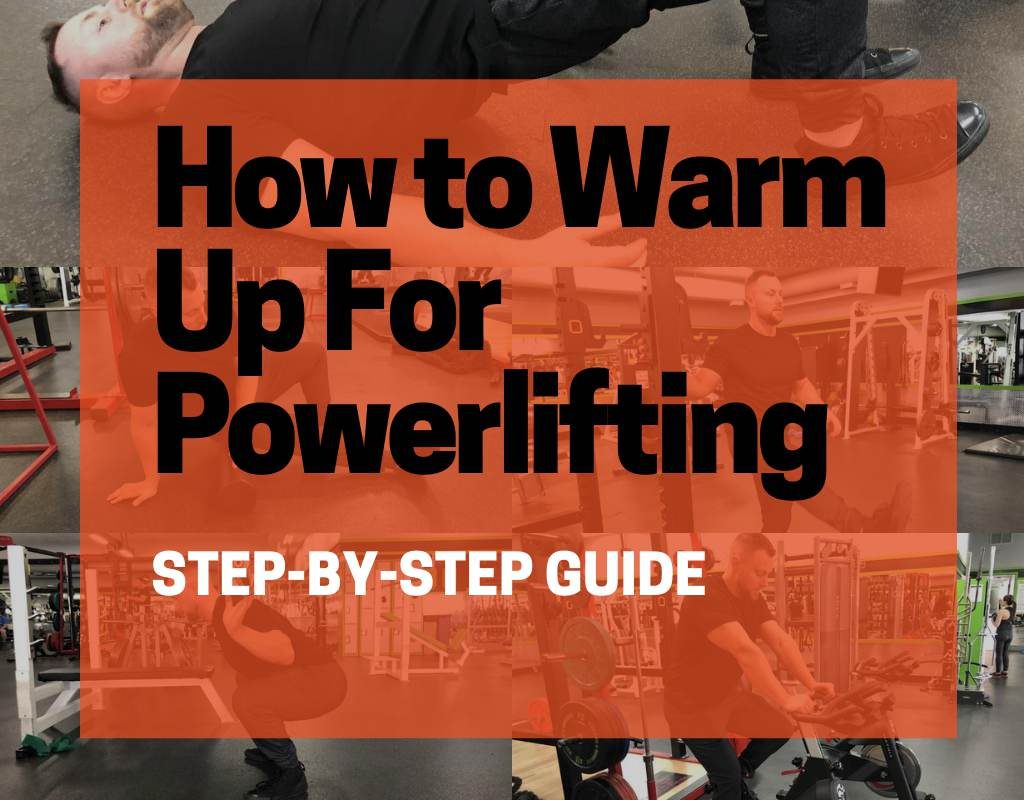
Your warm-up should be just as planned out as the rest of your training program. From my experience, everyone will adopt a unique ‘style' that works for them — spending a bit more time doing ‘this' or ‘that'. But regardless of the individual differences, all warm-ups should include certain key elements.
There are five phases to any successful powerlifting warm-up:
The goal of going through each of these phases for your warm-up is to increase heart rate, improve range of motion, activate muscles that stabilize the prime movers, enhance motor control/body awareness, and prepare mentally for the workout. These outcomes will be important for each of the powerlifting movements: squat, bench press, and deadlift.
I want to give you a clear roadmap to properly warming up for powerlifting. So let's dive into these different phases!
1. General Warm Up
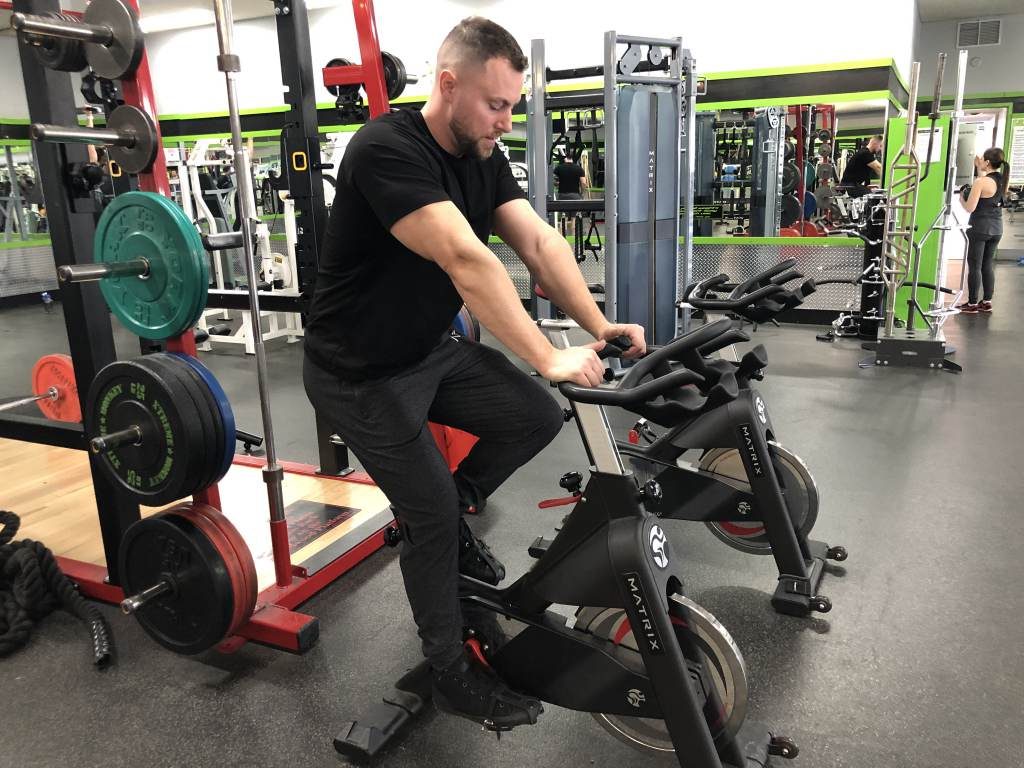
The purpose of the general warm-up is to increase your heart rate.
By increasing your heart rate you will prepare the body to engage in the next few steps of the warm-up (i.e. dynamic stretching), reduce the risk of soft-tissue injury when beginning to load the barbell (Fradkin et al., 2006), and improve performance (Barroso et al., 2006).
The general warm-up is often the phase where I see most people skip — especially powerlifters. But research says this is an important phase of the warm-up routine for powerlifters.
Based on a study by Cesar et al. (2011), athletes who included a general cardiovascular warm-up prior to performing a 1 rep max strength test increased their strength on average by 8.4% compared with those who just started warming up with weights.
So for those of you who skip this phase of warm-up, I highly encourage you to reconsider the impact it has on performance.
As I will describe, the process of increasing your heart rate through a general warm up may be slightly different depending on whether you're doing an ‘everyday workout' or whether you're testing your 1 rep max strength.
General Warm-Up For Your ‘Everyday Workout'
An ‘everyday workout' can be defined as going into the gym and doing a prescribed number of sets and reps at a specific load. The goal may be to build muscle or gain strength, but not to test your strength (like building up to a 1 rep max).
The proper protocol for this type of workout includes performing 5 minutes of some cardiovasuclar work, such as: biking, jogging, rowing, skipping, sled pushes/pulls, or anything similar. In terms of the intensity, you'll want to keep it fairly low/moderate, but by the time you finish you should be breaking a light sweat.
Interestingly, a study by Wilson et al. (2012) advocated for cycling, NOT running, before your strength training:
The study found that running before strength training resulted in significant decrements in both strength and hypertrophy. It should be noted that the cardio protocols in this study prior to strength training were more similar to aerobic exercise than a traditional ‘warm-up' routine.
My personal preference is spending 5-minutes on the stationary bike where I gradually increase the Revolutions Per Minute (RPM) over the time allowed. I like the stationary bike because it's a bit easier on my joints versus other activities like running or skipping. But, despite what the study said above, if you prefer running as a warm-up, I don't think 5-minutes of light jogging on the treadmill would impact performance negatively. Pick the activity that best suits you, just don't do a full-blown cardio session beforehand.
General Warm-Up For ‘Testing Your 1 Rep Max'
Testing your strength means that you're going into the gym with the explicit goal of building up to a 1 rep max. There is evidence to suggest that a different kind of general warm-up should be implemented if your goal is to test strength.
A study by Barroso et al. (2006), evaluated the duration and intensity of a general warm-up on the effects of 1 rep max leg press strength. Under the different warm-up conditions tested (high intensity, low intensity, high duration, low duration), they concluded that a low intensity warm-up of 15-minutes was superior in improving 1 rep max strength — low intensity was defined as breaking a ‘light sweat'. The difference in 1 rep max strength was 3-4% higher for the group that performed this style of warm-up compared with the others styles.
While leg pressing is only one exercise, I would argue that the study's conclusions are still relevant to the powerlifting movements more generally. Based on this research, if you're going to test your strength then perhaps a longer general warm-up may be beneficial. I would recommend experimenting with a 15-min general warm-up the next time you test your 1 rep max squat and gauge its effectiveness for yourself. As I said in the outset, everyone will have their unique individual differences, and this may or may not be something that works for you.
2. Mobility
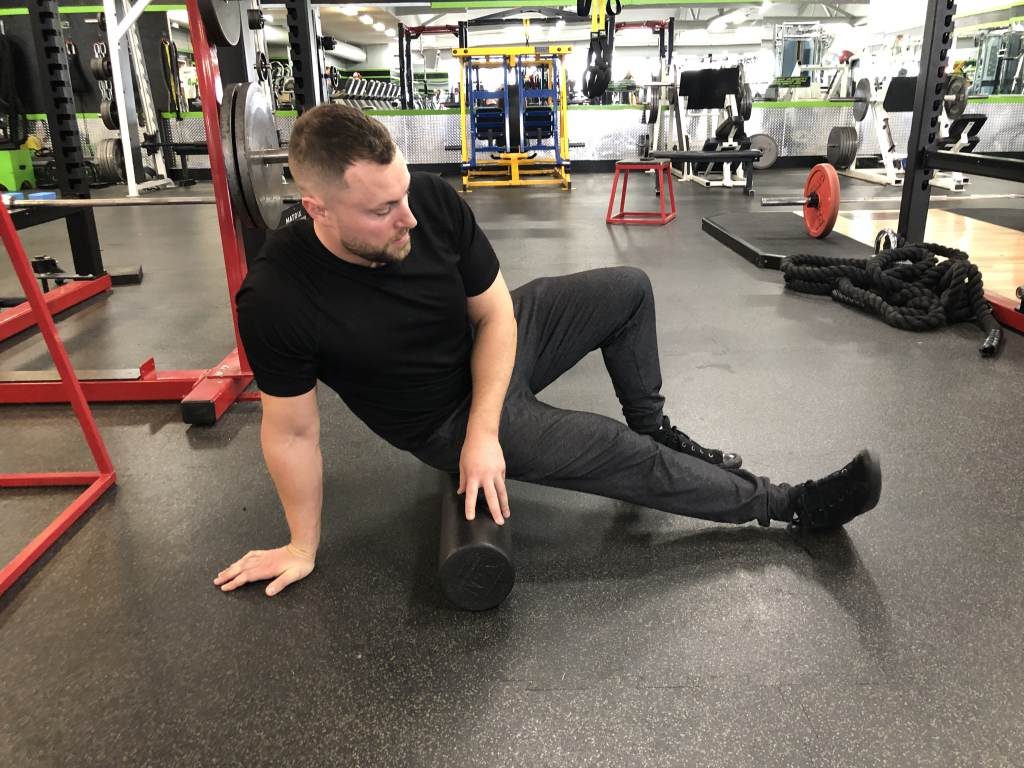
The purpose of performing mobility work is to increase your range of motion and improve blood flow to the muscles.
A mobility routine includes releasing tight muscles and connective tissue in order to improve the end range of a particular joint angle. This is a form of self-massage or myo-facial release — a means of applying gentle sustained pressure to restore motion.
For example, you can think of this as releasing tight hamstrings or glutes so that you can go deeper in the squat.
So, how do you release these muscles? You'll need some form of mobility tools like a foam roller or lacrosse ball and then apply pressure to the targeted muscle group.
There's some important research to consider when it comes to using foam rolling for improving range of motion and performance.
First, the increase in range of motion is only temporary.
Several studies have concluded that the practice of including a foam rolling routine in your warm-up will increase joint range of motion. However, this effect is only short term, which means you can increase range of motion temporarily for your workout by foam rolling, but those benefits aren't sustained afterward (Cheatham et al, 2015).
Take this to mean that if you have any significant range of motion issues then foam rolling alone isn't a magic cure. It will give you some slight performance benefits in the moment, but you'll likely need additional work to have long-lasting effects on your range of motion.
Second, when you combine foam rolling with other phases of the warm up (like dynamic stretching) you have the potential to increase performance.
A study by Peacock et al. (2014) showed that when combining foam rolling with the other elements of warming up that it improved muscle performance. Specifically, the researchers looked at bench press strength, which improved by 3.5% in the foam rolling group and static stretching roup.
While this study only looked at bench press, I'd argue that some of the same performance benefits would apply to the squat and deadlift as well. It's important to recognize that the benefits occurred by combining both foam rolling with other warm up elements such as dynamic stretching (which we'll cover next). So, this is exactly why you shouldn't skip one phase of the warm-up, but rather have an integrated approach, and follow the steps in this article in the order presented.
Mobility Protocol
In terms of the exact protocol for applying pressure through foam rolling, the research on the subject is still unsubstantiated. No specific protocol is given because research is fairly new, and the studies range in their methods of analysis and the people they choose to research (young, old, etc.).
However, my general recommendation is as follows:
- Find a tender spot on your muscles and sustain pressure until pain/tenderness subsides by approximately 75% (Clarket al. 2014).
- You'll want to apply pressure so that you feel the first sensation of ‘perceived pain' (Macdonald et al., 2014). You don't want to lightly apply pressure, it should be somewhat painful initially.
- Aim to do 5-10 strokes over the targetted muscle group for approximately 30-60 seconds (Peacock et al., 2014).
- Try to relax as much as possible (don't tense your muscles)
Curious to know how long powerlifting workouts are? Check out my article How Many Hours A Day Do Powerlifters Train?
What Muscles Should We Target?
The muscles that you target for your mobility routine may vary from person-to-person, and depend on the type of powerlifting movement you're doing on any given workout.
For example, muscle groups could include:
- For squats: quads, hamstrings, glutes, or calves.
- For bench press: lats, pecs, triceps, or spinal erectors.
- For deadlift: hamstrings, spinal erectors, or inner thigh (for sumo pullers).
Any excessive muscle tightness in these muscle groups may limit the range of motion at the level of the joints (shoulders, elbows, hips, knees, ankles). You'll need to have some basic level of mobility through these joints to successfully execute the lifts and freely move in the range of motion required.
I certainly don't think you need to perform mobility on each of these muscle groups to have a decent warm-up. What I recommend is selecting 1-3 areas that are most specific to your current needs and level of muscle tightness.
Mobility Routines For Squat, Bench Press, and Deadlift
These are my favorite mobility routines broken into whether you're doing a squat, bench press, or deadlift workout. Feel free to include these routines as part of this phase of your warm-up.
Mobility Routine For Bench Press
One Mistake People Make
Far too many people overemphasize the mobility portion of their warm-ups.
I've literally had training partners that would spend 45-minutes implementing their foam rolling routine. This part of your warm-up should take less than 5-minutes, and only include 1-3 targeted muscle groups. Feel free to rotate the routines around, and pick and choose different foam rolling movements, but don't do the whole list in a single warmup.
3. Dynamic Stretching

The purpose of dynamic stretching is to lengthen the muscle and improve their function.
Many people confuse the differences between dynamic and static stretching, so let's cover some basic definitions.
Difference Between Dynamic & Static Stretching
Dynamic stretching is the process of moving your muscles in and out of a range of motion (sometimes quickly) about 15-30 times.
For example, dynamic stretching can include things like arm rotations and leg swings. However, it can also involve movements like squatting and lunging, but rather than performing them under normal conditions, you're moving in and out of the deepest end range with the goal of increasing the range on the last rep compared with the first.
Static stretching is the process of holding your muscle at a fixed length for a longer period of time, about 1-2 minutes.
For example, static stretching can include things like holding a hamstring or hip flexor stretch in a fixed position for a couple of minutes.
It's critically important you develop a proper warm-up routine, especially if you are powerlifting with scoliosis. Check out my complete guide if that's you!
Why Use Dynamic Stretching?
Studies have shown that using dynamic stretching before working out is much more beneficial than using static stretching protocols.
In a study by McMillian et al. (2006), dynamic stretching showed to improve performance across a number of outcomes, including strength, speed, and power, when performed before the workout. In the same study, however, static stretching had the opposite effect, and was shown to deteriote perfomance.
It's important to recognize that static stretching isn't bad altogether. If you perform static stretching after you workout then it can be beneficial in improving overall muscle length and recovery. But since we're talking about how to warm-up effectively for powerlifting, if static stretching is conducted before you workout then performance will be negatively impacted.
Therefore, you want to ensure that you're always engaging in dynamic stretching protocols, not static stretching, as part of your warm-up routine.
Examples of Dynamic Stretching Protocols
Dynamic Stretches For Bench Press
Dynamic Stretches For Deadlift
4. Muscle Activation
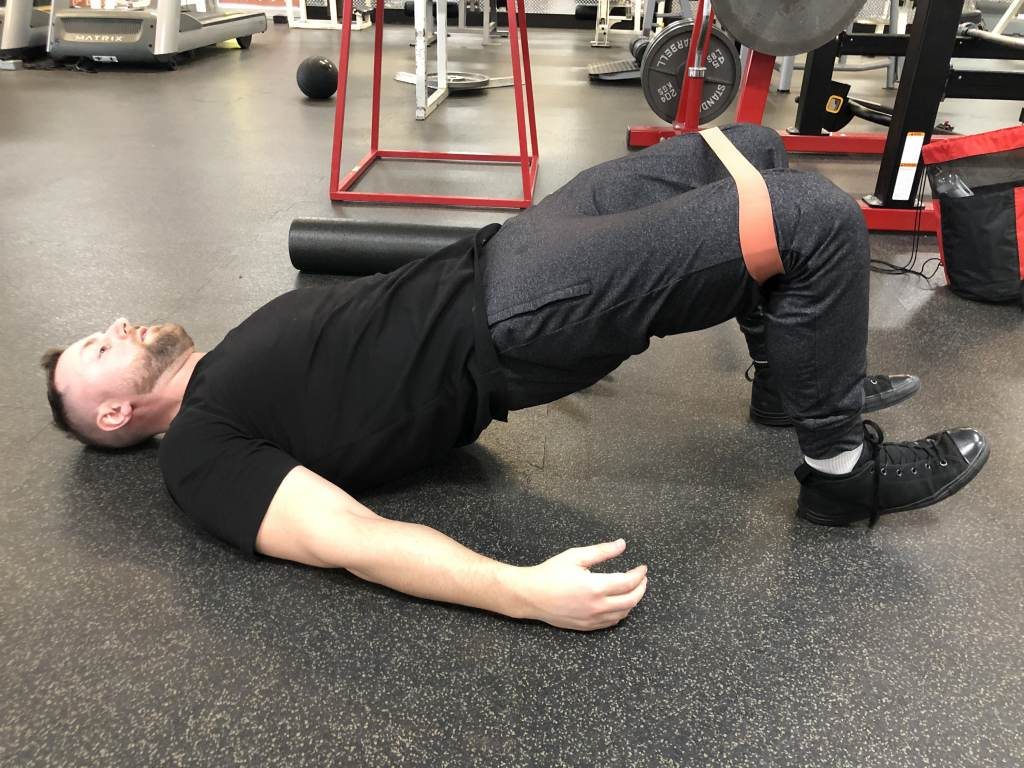
The purpose of muscle activation is to prime the stabilizing muscles that have a role in supporting the prime movers.
When you lift weights, you have both prime movers and stabilizing muscles.
The prime movers are the muscles that contribute to moving the weight in whatever range of motion you intend. For example, in the bench press, the prime movers are the pecs, shoulders, and triceps, and they help push the bar from chest to lock-out.
The stabilizing muscles aren't directly involved with moving the load, but they work to decelerate the bar (on the way down) and restrict inefficient movement patterns. For example, in the bench press, the stabilizing muscles include the erector spinae and lats.
Together the prime movers and stabilizing muscles work together to produce force and a well-coordinated movement. However, we often neglect warming up the stabilizing muscles that support the prime movers.
Related Article: Best Reverse Pec Deck Alternatives.
Muscle Activation Protocol
The goal is to activate or ‘turn on' the stabilizing muscles, but not to fatigue them. As such, we want to keep the resistance fairly light, and focus on ‘mind-muscle connection'. This is where you concentrate hard on the muscle that you're trying to activate, and your job is to isolate it completely.
Here are my general protocols for muscle activation:
- Select 1-2 exercises that target the stabilizing muscles required for the day
- Perform 1-2 sets of 10-15 reps using a light or bodyweight resistance
- Use a controlled tempo to ensure you're not compensating with bigger muscle groups
- Over time rotate the activation exercises you perform to add variation to your warm-up routine
What Stabilizing Muscles Should We Target?
The muscles that you target are going to be based on personal preference and what powerlifting movement you're doing on any given workout.
For example, stabilizing muscles could include:
- For squats: glute maximus, glute medius
- For bench press: rotator cuff, rear delt, serratus anterior
- For deadlift: trunk, glute medius
The exact stabilizing muscles that are targeted will be based on movement deficiencies present when executing the powerlifting movement. If you lack stability in a certain area then you'll want to target it mores specifically through your warm-up routine.
For example, in the squat you might notice that your knees are caving inward. This may be due to several reasons, but one possible explanation is that your glute medius, the muscle that is responsible for external hip rotation, is not activated or strong enough to keep your knees in alignment. In this case, it would be important to add in some glute medius exercises as part of your warm-up to ensure its primed and ready to support the forces at the level of the hip joint during squatting.
Each activation routine will differ, but you can borrow some ideas below to include into your own warm up.
Activation Exercises For Squat, Bench Press, and Deadlift
These are my favorite activation routines broken into whether you're doing a squat, bench press, or deadlift workout. Feel free to include these routines as part of this phase of your warm-up.
Activation Exercises For Squat
Activation Exercises For Bench Press
Activation Exercises For Deadlift
5. Barbell Warm Up
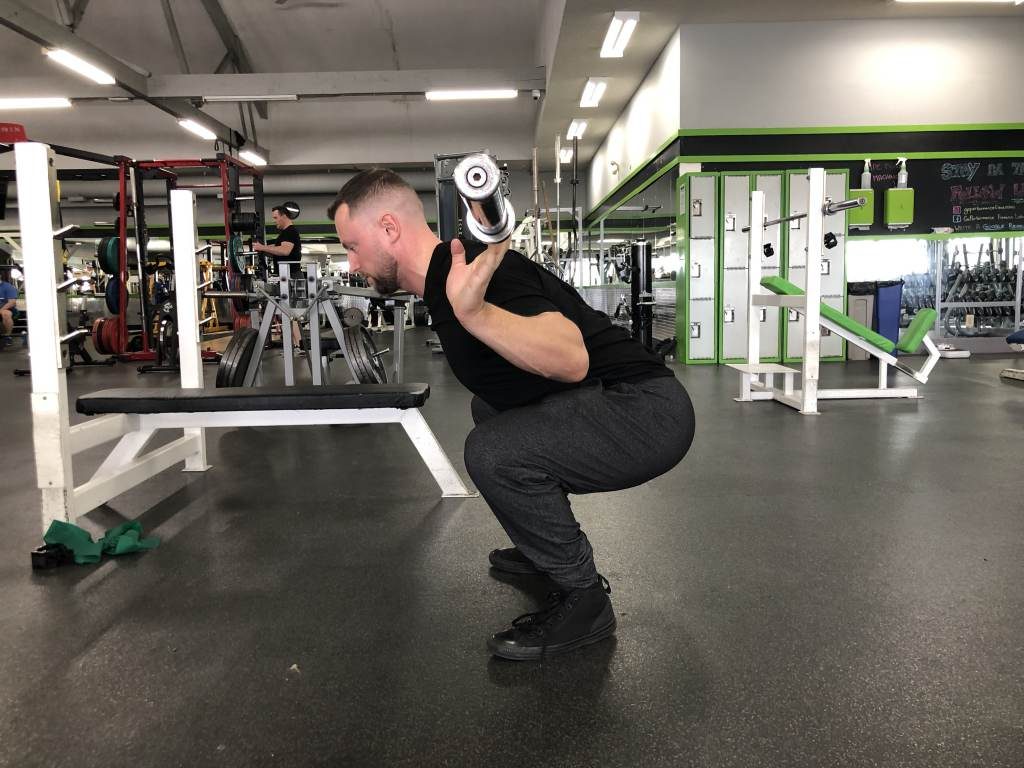
The purpose of the barbell warm-up is to more specifically warm-up the prime movers and nervous system. In this phase, you'll also increase your focus for the workout.
A world powerlifting medallist once told me that he treats the ‘barbell warm-up' as his ‘practice sets'. This is a helpful way to understand the barbell warm up.
By treating the reps as ‘practice', you're increasing awareness of the movement pattern and trying to lift with sound technique. Just because you're lifting lighter loads through the barbell warm-up, doesn't mean you should not be focused on how you're moving. The technique should be the same whether you're using a max load or warming up with the bar.
Let's consider a basketball player warming up with free throw shooting. The player will use the same elbow position and follow through of the lower arm to shoot the ball. Even though it's not a ‘game setting', the player uses the warm-up time as practice for the ‘real thing'.
The same goes for powerlifting. Practice the technique that you want to execute under heavy weight, and begin to focus your attention on the workout at-hand.
Making The Right Jumps
The goal of making the right jumps is to ensure your peripheral and nervous system are adequately warmed-up.
The peripheral system refers to your muscles, tendons, and ligaments.
The nervous systems refers to your brain's ability to fire electrical signals to the muscle.
To warm-up the peripheral and nervous system adequately is a delicate balance. You want to ensure your muscles are warm, and your brain has a chance to get used to heavier loads, but you don't want to do too much where you're fatigued before getting to your top sets. Conversely, doing too little before your top sets may lead to injury or shock your system under heavier loads.
So how do you find this balance?
It starts with having a specific workout planned. If you know what your ‘work sets' or ‘top sets‘ will be for the day, then it will help you work backward to plan your barbell warmups.
While I'll be providing some examples below, planning the right jumps is more of an art than science. It's important to know that how you warm-up for squat, may be different than bench press, and vice versa. People will also differ based on personal preference — so to copy someone exactly may or may not work.
My recommendation is to start with the general example below and then continue to refine your barbell warm-ups over time. Feel free to experiment with taking smaller or bigger jumps, more or less sets, and gauge its effectiveness on how you perform.
Check out article about Why Can’t I Straighten My Arm After Workouts (Cause & Fixes)
Barbell Warm Up Examples
The general rule of thumb is as follows:
- Perform lighter warm-ups to reinforce technique and begin focusing
- Add weight to get used to the feeling of a heavier weight
- Guage how your performing as you complete each set
- Consider adjusting your warm-ups or work sets based on your performance
This last point should not be understated. Don't ignore how your body feels as you're warming up.
If warm-up weights are moving heavy, perhaps consider decreasing your ‘working weights' slightly. Conversely, if the warm-ups are moving faster than usual, perhaps consider increasing your working weights to take advantage of your superior performance that day.
The exact barbell warm-up will depend on:
- How many reps you're doing for your ‘working sets'. The lower the rep range, the more sets you need because typically as reps decrease, load increases.
- Your level of strength. The stronger you are, the more sets you need because the working weights will be heavier.
With that said, here is my general recommendation:
- Bar 1-2 sets of 8-10 reps
- 5-8 reps @ 30% of working weight (stronger lifters will need this set, but most people can consider skipping)
- 5-8 reps @ 45% of working weight
- 5 reps @ 60% of working weight
- 5 reps @ 75% of working weight
At this point, you might feel confident in jumping straight to your top sets if the reps are higher (8-10 reps). If not, continue on.
- 2-4 reps @ 85-90% of working weight
At this point, you might feel confident in jumping straight to your top sets if the reps are moderate (4-6 reps). If not, continue on.
- 1-3 reps @ 95% of working weight
At this point, you should be confident jumping straight to your top sets, especially if the reps are low (1-3 reps)
It's important to know that this example is not the warm-up strategy that I would implement if you're competing in a powerlifting competition. For the purposes of this article, this barbell warm-up is only applicable to your training sessions.
Final Thoughts
I hope I've convinced you that each phase of the warm-up is an important part of your powerlifting workout.
- The general warm-up increases your body temperature
- Mobility increases blood flow and range of motion
- Dynamic stretching lengthens the muscle and improves its function
- Muscle activation targets the stabilizing muscles that have a role in helping the prime movers
- The barbell warm-up activates the peripheral and nervous system, and prepares you mentally
Each of these phases should take you a few minutes, with the entire warm-up process taking no longer than 15-minutes. Keep in mind, warm-ups will vary from person to person and over time you'll develop your own unique process.
References
Barroso, R., Silva-Batista, C., Tricoli, V. Roschel, H., Ugrinowitsch, C. (2013). The Effects of Different Intensities and Durations of The General Warm-Up on Leg Press 1RM. Journal of Strength and Conditioning Research. 27(4), 1009-1013.
Cesar, A., Macros, P., Ugrinowitsch, C., Valmor, T., Renato, B. (2011). Combination of General and Specific Warm-Ups Improves Leg Press One Repetition Maximum Compared With Specific Warm-Up in Trained Individuals. Journal of Strength and Conditioning Research. (25(8) 2243-2245.
Fradkin, A., Zazryn, T., Smoliga, J. (2010). Effects of Warming-Up On Physical Performance: A Systematic Review With Meta-Analysis. Journal of Strength and Conditioning Research. 24(1), 140-148.
Macdonald, G., Button, D., Drinkwater, E. Behm, D. (2014). Foam Rolling as a Tool After an Intense Bout of Physical Activity. Medicine Science Sport Exercise. 46(1), 131-143.
McMillian, D., Moore, J., Hatler, B., Taylor, D. (2006) Dynamic vs. Static Stretching Warm Up: The Effect on Power And Agility Performance. Journal of Strength and Conditioning Research. 20(3) 492-499.
Peacock, C., Krein, D., Silver, T., Sander, G., Carlowitz, K. (2014). An Acute Bout of Self-Myofascial Release in The Form of Foam Rolling Improves Performance Testing. International Journal of Exercise Science. 7(3), 202-211.
Wilson, J., Marin, P., Rhea, M., Wilson, S., Loenneke, J., Anderson, J. (2012). Concurrent Training: A Meta-Analysis is Examining Interference of Aerobic And Resistance Exercises. Journal of Strength and Conditioning Research. 26(8), 2293-2307.